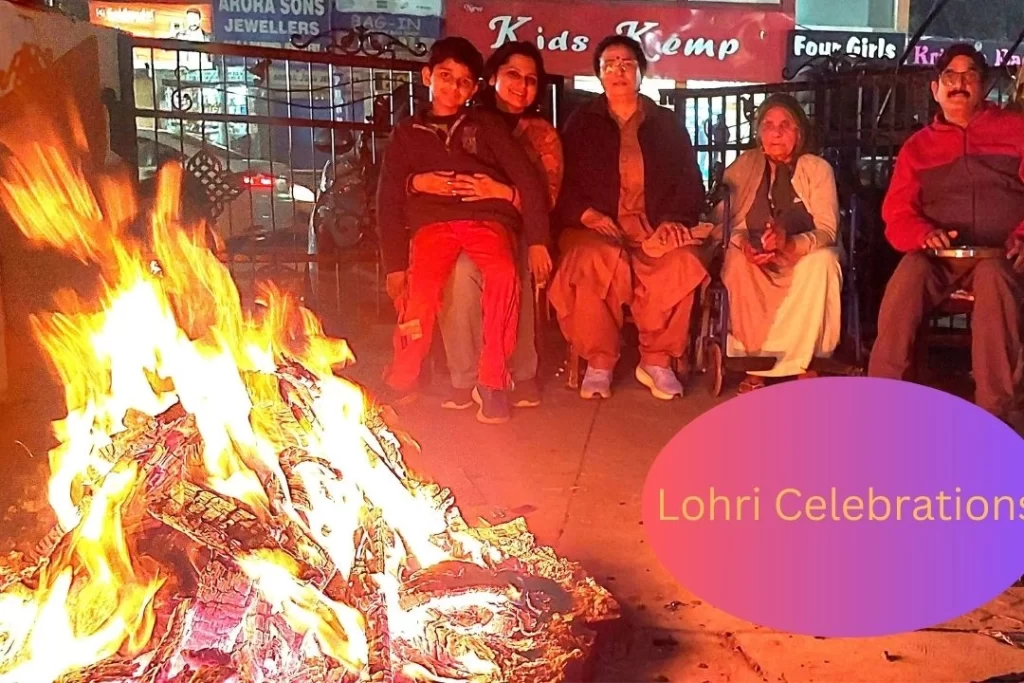The vibrant festival of Lohri was celebrated with great enthusiasm and fervor across North India today, bringing communities together in a colorful display of tradition, joy, and unity. Known as the festival of harvest, Lohri holds a special place in the hearts of Punjabis and is observed with equal zeal by other communities in the region.
Lohri marks the end of the winter solstice and the beginning of longer days, symbolizing warmth, light, and the promise of a fruitful harvest. Traditionally, it is celebrated to honor farmers and their hard work, particularly as they prepare to harvest the rabi crops. The festival also has a deep spiritual significance, dedicated to the Sun God and Agni (the fire deity), and is seen as a day to thank the elements of nature for their blessings.
The festivities primarily revolve around lighting bonfires, dancing to the tunes of traditional Punjabi folk songs, and enjoying seasonal delicacies such as til (sesame), gud (jaggery), peanuts, and popcorn.
Cities and villages alike were adorned with lights and decorations to mark the occasion. The highlight of the celebrations was the bonfire, around which families, friends, and neighbors gathered. In the cities of Punjab, including Ludhiana, Amritsar, and Chandigarh, the celebrations reached their zenith as people came together in parks, community centers, and homes to partake in the joyous rituals.
In Delhi, the festival took on a cosmopolitan flavor with Lohri events being held in residential colonies and clubs, featuring Bhangra and Gidda performances by professionals as well as enthusiastic locals. Chandigarh’s Rock Garden hosted an open-air Lohri party, drawing visitors from various parts of the region.
The traditional lighting of the bonfire was accompanied by offerings of sesame seeds, jaggery, sugarcane, and rewari (a sweet delicacy). People circled the fire, chanting prayers and throwing these offerings into the flames as a mark of gratitude to nature. It is believed that the crackling fire carries their prayers for prosperity and happiness to the heavens.
A unique aspect of Lohri is its significance for newlyweds and newborns. Families celebrating a recent wedding or the birth of a child held special prayers, inviting their near and dear ones to join in the merriment. Homes were beautifully decorated, and guests were treated to an array of festive dishes, including makki ki roti (cornbread) and sarson ka saag (mustard greens).
Music and dance are an integral part of Lohri celebrations. The pulsating beats of the dhol and the melodies of traditional Punjabi folk songs filled the air as people danced energetically to Bhangra and Gidda. Children, too, had their share of fun, going door-to-door singing folk songs in return for treats or small gifts, a practice akin to Halloween trick-or-treating.
Television channels and social media platforms were flooded with videos of Lohri celebrations, including celebrity posts and festive greetings. Popular Punjabi singers and actors shared glimpses of their Lohri celebrations, spreading the festive spirit far and wide.
Educational institutions and workplaces also joined the festivities by organizing Lohri-themed events. Schools conducted cultural programs where students dressed in traditional attire performed folk dances and skits, depicting the festival’s historical and cultural significance. In offices, employees participated in Lohri-themed games and potluck lunches, fostering camaraderie and team spirit.
The spirit of Lohri extended beyond Punjab and Haryana, resonating in other parts of the country and even among the Indian diaspora worldwide. Communities in Canada, the United States, and the United Kingdom held grand Lohri celebrations, ensuring that the essence of the festival remained alive thousands of miles away from home.
This year, Lohri celebrations carried an additional message of sustainability and environmental consciousness. Many communities opted for eco-friendly bonfires and emphasized reducing waste during the festivities. The day also served as a reminder of the importance of unity, gratitude, and cherishing one’s roots in a fast-changing world.
As the evening came to a close, the flickering flames of the bonfires lit up the night sky, leaving behind warm memories and hope for the year ahead. Lohri continues to be a cherished tradition that binds people together, fostering a sense of belonging and shared heritage.
The celebration of Lohri remains a vibrant symbol of India’s rich cultural tapestry, bringing joy and togetherness to millions. Whether in a bustling city or a quiet village, the festival’s message of gratitude and celebration of life shines through, reminding us all of the importance of community and tradition.




